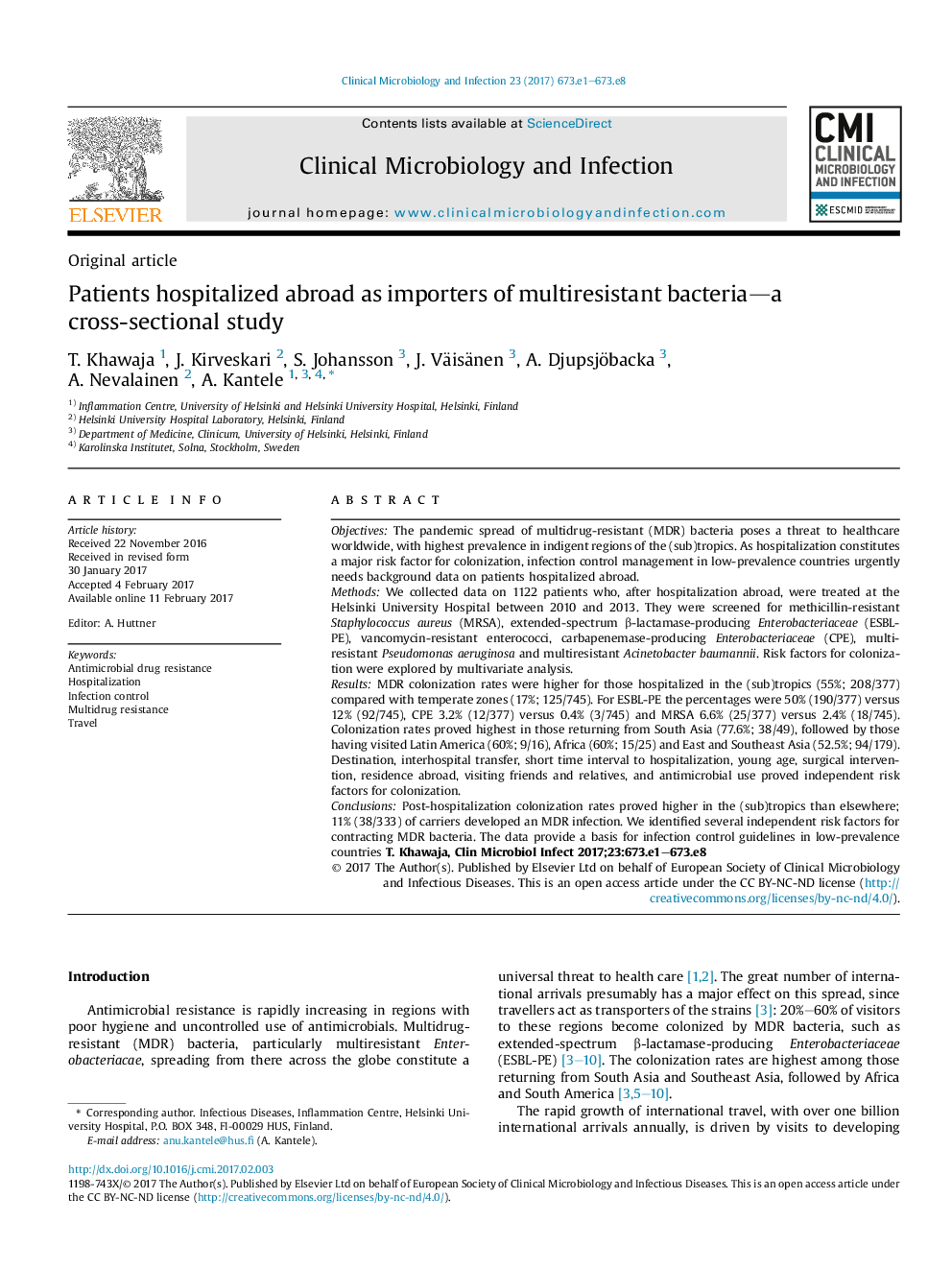| کد مقاله | کد نشریه | سال انتشار | مقاله انگلیسی | نسخه تمام متن |
|---|---|---|---|---|
| 5671614 | 1408062 | 2017 | 8 صفحه PDF | دانلود رایگان |
ObjectivesThe pandemic spread of multidrug-resistant (MDR) bacteria poses a threat to healthcare worldwide, with highest prevalence in indigent regions of the (sub)tropics. As hospitalization constitutes a major risk factor for colonization, infection control management in low-prevalence countries urgently needs background data on patients hospitalized abroad.MethodsWe collected data on 1122 patients who, after hospitalization abroad, were treated at the Helsinki University Hospital between 2010 and 2013. They were screened for methicillin-resistant Staphylococcus aureus (MRSA), extended-spectrum β-lactamase-producing Enterobacteriaceae (ESBL-PE), vancomycin-resistant enterococci, carbapenemase-producing Enterobacteriaceae (CPE), multiresistant Pseudomonas aeruginosa and multiresistant Acinetobacter baumannii. Risk factors for colonization were explored by multivariate analysis.ResultsMDR colonization rates were higher for those hospitalized in the (sub)tropics (55%; 208/377) compared with temperate zones (17%; 125/745). For ESBL-PE the percentages were 50% (190/377) versus 12% (92/745), CPE 3.2% (12/377) versus 0.4% (3/745) and MRSA 6.6% (25/377) versus 2.4% (18/745). Colonization rates proved highest in those returning from South Asia (77.6%; 38/49), followed by those having visited Latin America (60%; 9/16), Africa (60%; 15/25) and East and Southeast Asia (52.5%; 94/179). Destination, interhospital transfer, short time interval to hospitalization, young age, surgical intervention, residence abroad, visiting friends and relatives, and antimicrobial use proved independent risk factors for colonization.ConclusionsPost-hospitalization colonization rates proved higher in the (sub)tropics than elsewhere; 11% (38/333) of carriers developed an MDR infection. We identified several independent risk factors for contracting MDR bacteria. The data provide a basis for infection control guidelines in low-prevalence countries
Journal: Clinical Microbiology and Infection - Volume 23, Issue 9, September 2017, Pages 673.e1-673.e8
